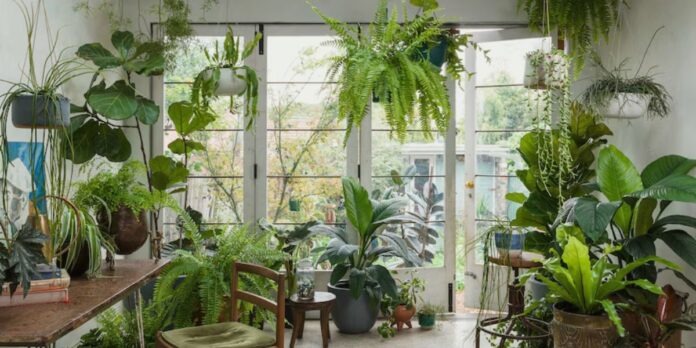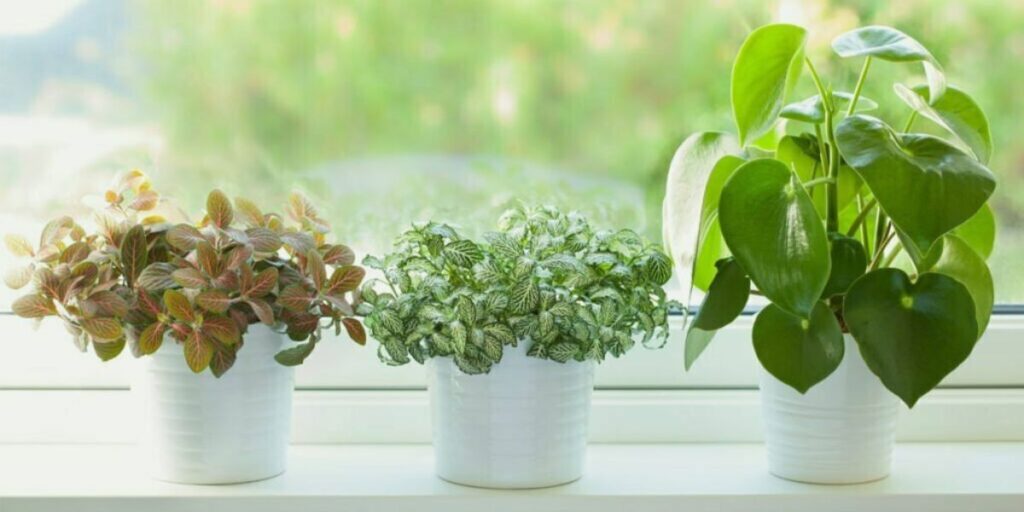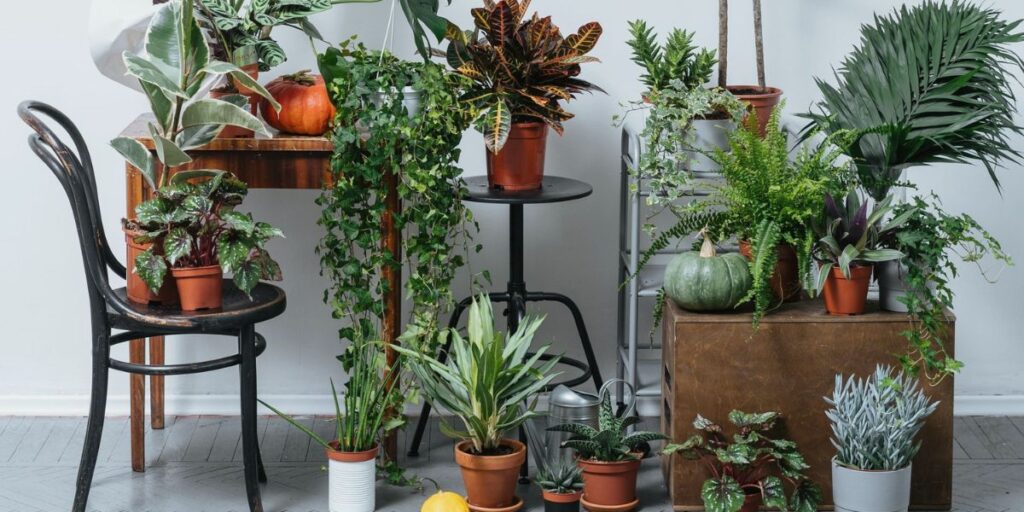In today’s world, where people spend up to 90% of their time indoors, air quality is more important than ever. Indoor environments, often laden with pollutants, dust, and allergens, can significantly impact health. Fortunately, indoor plants are one simple yet effective way to enhance the air quality inside your home or office. Known for their natural beauty and ability to improve mental well-being, plants also serve as nature’s air purifiers. They not only absorb carbon dioxide and release oxygen but also can filter out harmful toxins and pollutants from the air.
Understanding Indoor Air Pollution
Indoor air pollution is a growing concern, especially in well-insulated, energy-efficient buildings that may not allow for adequate ventilation. Pollutants such as volatile organic compounds (VOCs), carbon monoxide, nitrogen dioxide, dust, and mold spores often accumulate indoors. These harmful substances can come from various sources, including household cleaning products, furniture, carpets, paints, and tobacco smoke. Over time, exposure to these pollutants can lead to respiratory issues, allergies, headaches, and even chronic conditions like asthma.
This is where indoor plants can come to the rescue.
How Do Plants Clean the Air?
Plants improve indoor air quality primarily through three processes: photosynthesis, absorption, and transpiration.
Photosynthesis: During the day, plants absorb carbon dioxide and release oxygen through photosynthesis. This natural exchange helps balance indoor oxygen levels, ensuring that the air you breathe is fresher and healthier.
Absorption of Pollutants: Many indoor plants can absorb toxic substances through their leaves and roots. Studies by NASA in the late 1980s revealed that certain plants can remove a significant amount of pollutants from the air, including VOCs such as formaldehyde, benzene, and trichloroethylene. These compounds are commonly found in products like paints, adhesives, plastics, and furniture. Once absorbed, the plant’s roots and soil microbes break down these toxins into harmless by-products.
Transpiration: Through transpiration, plants release moisture into the air, which helps maintain indoor humidity levels. This is especially beneficial in dry indoor environments, which can lead to respiratory discomfort, dry skin, and increased static electricity. Adequate humidity can also prevent the growth of viruses and bacteria, reducing the likelihood of infections.
Best Indoor Plants for Air Purification
Not all plants are equally effective at improving indoor air quality. Some species are particularly adept at filtering out toxins and adding oxygen to the environment. Here are five of the best air-purifying plants you can introduce to your indoor spaces:
Spider Plant (Chlorophytum comosum): Spider plants are incredibly easy to care for and known for their ability to remove carbon monoxide, formaldehyde, and xylene from the air. They also produce tiny “pups” that can be propagated into new plants, making them a popular choice for improving indoor air quality.
Peace Lily (Spathiphyllum): Peace lilies are champions in air purification, removing pollutants like ammonia, benzene, and formaldehyde. With their lush green leaves and elegant white flowers, they also add a decorative touch to any room. However, peace lilies are mildly toxic to pets, so they should be placed out of reach if you have animals.
Snake Plant (Sansevieria trifasciata): The snake plant is one of the most efficient plants for converting carbon dioxide into oxygen at night, making it an excellent choice for bedrooms. It also filters out formaldehyde, xylene, toluene, and nitrogen oxides.
Boston Fern (Nephrolepis exaltata): Known for their air-purifying abilities, Boston ferns can remove formaldehyde and xylene from the air. They also help maintain humidity levels, making them a good option for dry indoor environments.
Aloe Vera: Besides being well-known for its healing properties, aloe vera also purifies the air by filtering out formaldehyde and benzene. This succulent is easy to care for and can be placed near windows to thrive in bright light.
Benefits Beyond Air Purification
Aside from their ability to filter air, indoor plants offer numerous other benefits. They help reduce stress, boost mood, and increase productivity. Research has shown that the presence of plants in indoor environments, such as offices and classrooms, can improve concentration and creativity. Plants can also reduce noise levels by absorbing sound, making your indoor space more peaceful.
Furthermore, plants create a visually pleasing environment, which can contribute to mental well-being. They bring a touch of nature indoors, offering a sense of tranquility and relaxation, especially in urban settings where outdoor greenery might be scarce.
Tips for Maximizing the Air-Purifying Effects of Plants
To get the most out of your indoor plants in terms of air purification, follow these simple tips:
Choose the Right Plants: Opt for plants that are proven to filter harmful toxins. The more plants you have, the more efficient they will be in improving air quality.
Regular Maintenance: Keep your plants healthy by providing adequate water, light, and nutrients. Dust the leaves regularly to ensure that they can efficiently absorb pollutants.
Vary the Placement: Place plants in different areas of your home or office, especially near potential sources of pollution, such as kitchens, bathrooms, and living rooms.
Use Different Plant Sizes: Large plants can filter more air, but small plants can still have a significant impact, especially when placed in groups.
Conclusion
Incorporating indoor plants into your living or working spaces is a simple, cost-effective way to improve indoor air quality. Not only do they filter harmful toxins from the air, but they also provide additional benefits, such as enhanced mood, increased productivity, and a more aesthetically pleasing environment. By selecting the right plants and caring for them properly, you can create a healthier, more vibrant indoor space for yourself and your loved ones.





